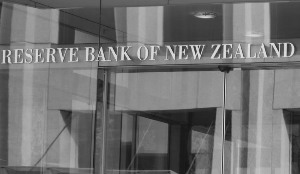
The Reserve Bank has long been concerned about the growth in high DTI mortgage lending that New Zealand has seen in recent years and the financial risks that it poses.
To this end, it has been pushing for the inclusion of a DTI instrument, which would limit the amount that people can borrow to a multiple of their income, in its macro-prudential toolkit for some time.
It has now released a DTI consultation paper and a cost-benefit analysis of the proposed policy and it indicates that a comparatively high number of property investors could be affected should a DTI tool be enacted.
The Reserve Bank estimates that around 2,000 owner occupiers and 9,000 investors a year might not buy a property if there was a limit on high DTI lending.
It seems that the higher number of prevented investor purchases largely reflects that fact that they currently account for a greater share of high DTI lending than for owner-occupiers.
Data from New Zealand’s five major banks shows that high DTI lending is more prevalent among investors and in Auckland.
About 60% of new property investor lending at these banks involved a DTI of greater than five, in the three months to January 2017.
This is as compared to 37% for new owner occupier lending over the same period of time.
While more investors than owner occupiers might be cut out of the market if a DTI policy was deployed, the Reserve Bank also suggests that the costs of an owner occupy being unable to purchase are larger than the costs facing an investor.
This is because an investor can reallocate their portfolio and hold different assets, while an owner occupier might be being prevented from transitioning into home ownership or from moving.
Once again, the Reserve Bank said that if it did have a DTI instrument in its toolkit today it wouldn’t implement it - especially given recent evidence of a cooling in the housing market and borrower activity.
However, it believes that if house price inflation, accompanied by more high DTI lending, takes off again then a DTI instrument could be the best tool to employ alongside the existing LVR restrictions.
If a DTI tool was used, the Reserve Bank estimates that house sales could fall by around 9% which could reduce house prices and credit growth by 2-5%.
Other countries which use DTI restrictions tend to have a set limit on the size of a loan a borrower can have relative to their income. For example, in Britain there is a limit of 4.5.
But the Reserve Bank has not specified such a limit in its consultation paper. Rather it said the exact nature of any limit applied would depend on the circumstances and further policy development.
It is also the Reserve Bank’s current preference that, as with the LVR restrictions, a DTI policy would involve the use of a “speed limit” under which banks could still undertake a proportion of loans at DTIs above the chosen threshold.
There would also be exemptions to similar to those seen with the LVR restrictions policy. For example, borrowing for new builds would be exempt.
The Reserve Bank now wants feedback on the risks of high-DTI lending, the potential for a limit to offset that, alternative options and desirable design features for any DTI policy.
Finance Minister Steven Joyce, who made the request for a cost-benefit analysis of a DTI tool, said the consultation paper was a comprehensive summary of the pros and cons of adding DTIs to the Reserve Bank's toolkit of regulatory options.
“The use of DTIs would be a significant intervention in the housing market, so it's important that all interested parties have their say during this consultation period.”
Read more:





Comments
No comments yet.
Sign In to add your comment